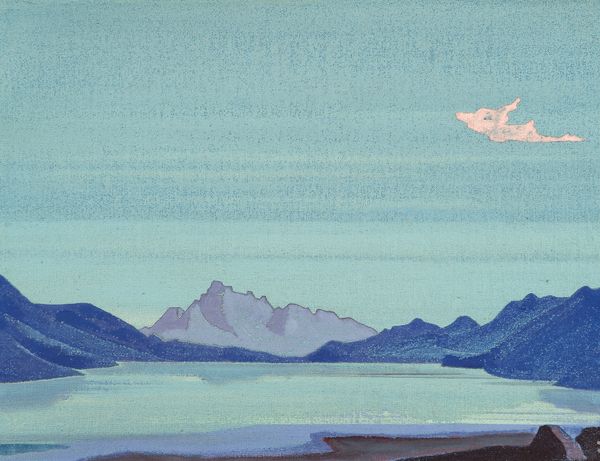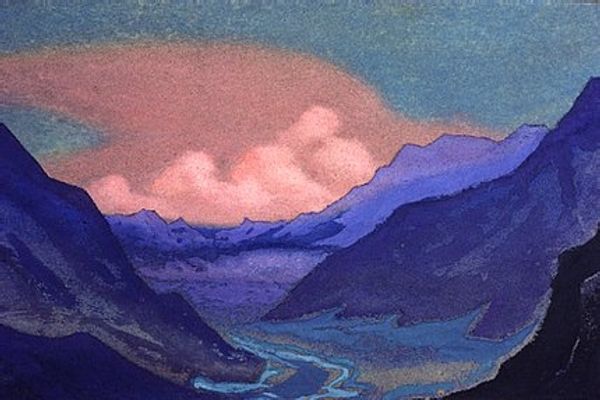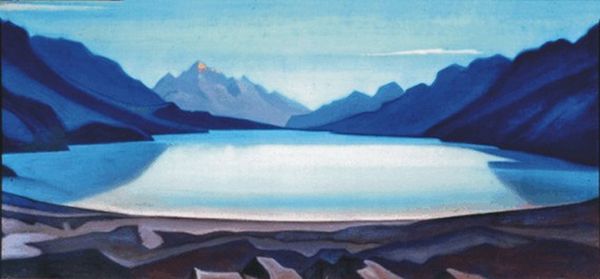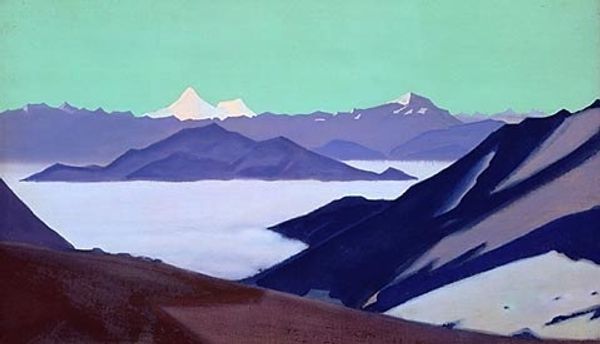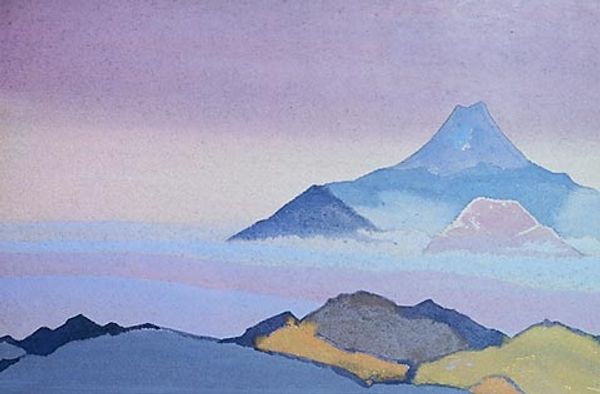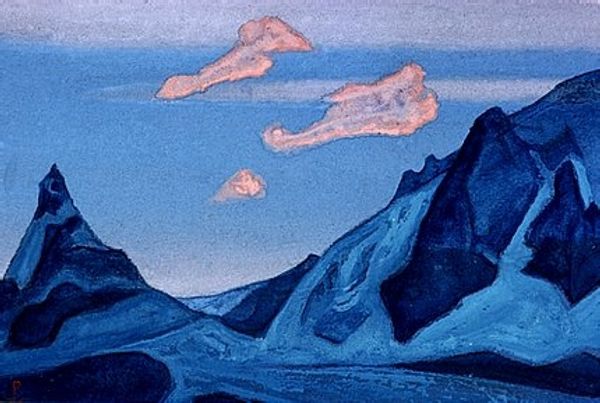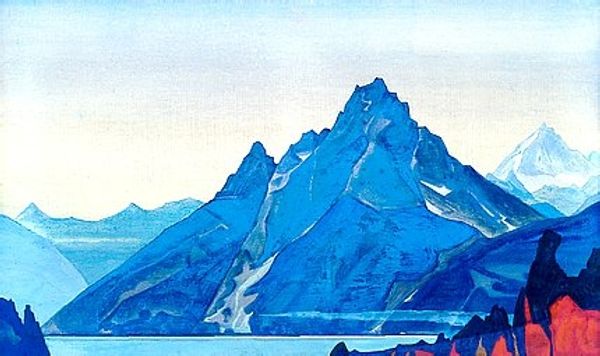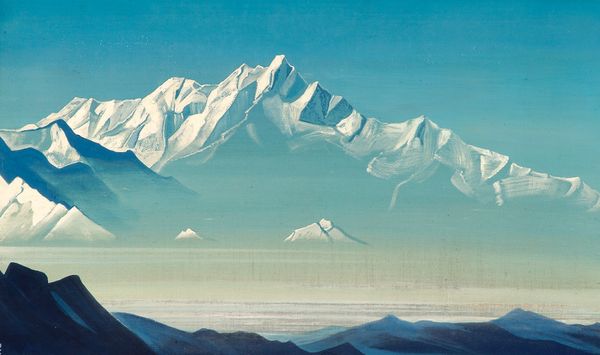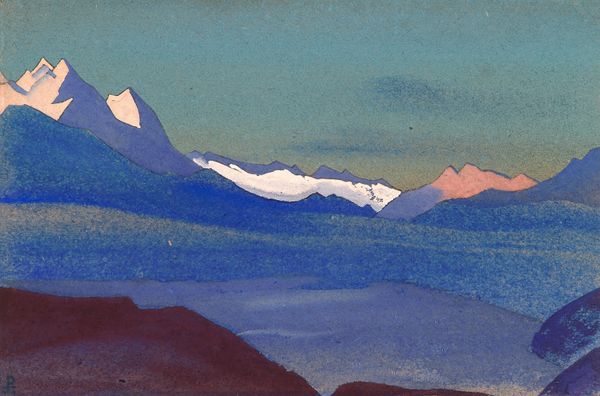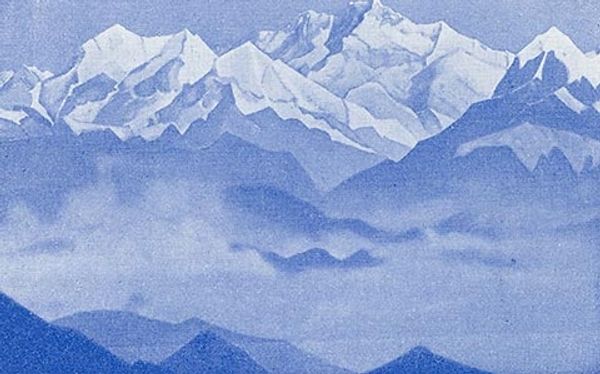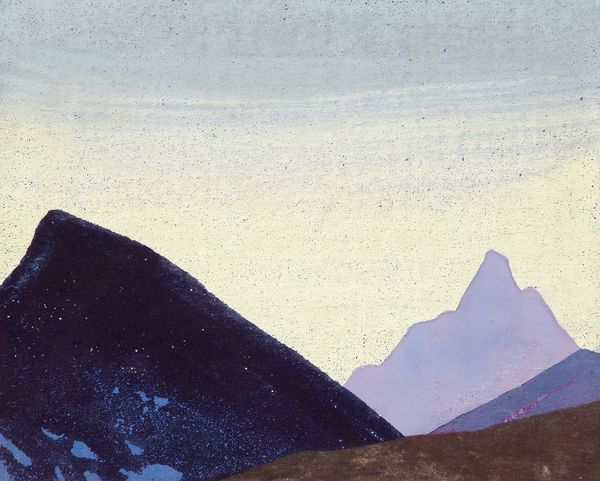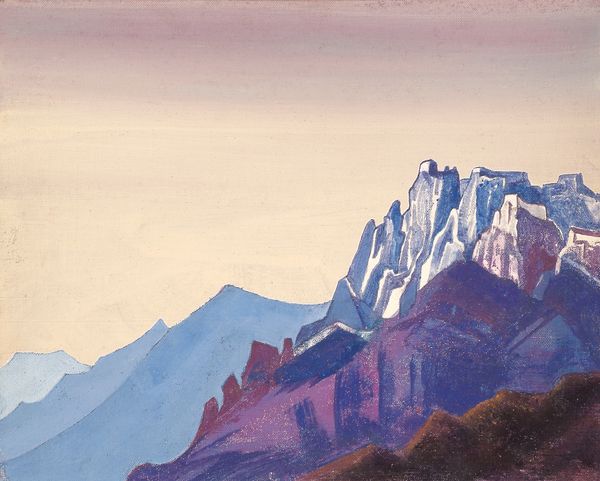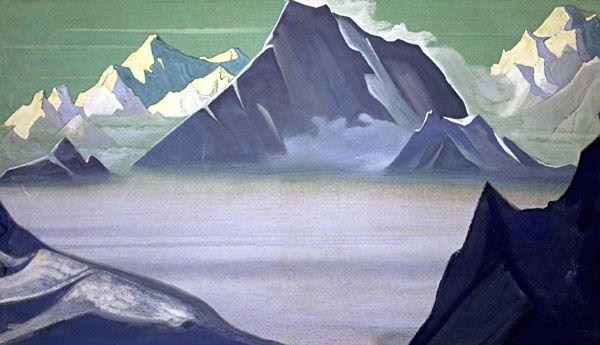
Copyright: Public domain
Editor: Here we have Nicholas Roerich's "Lake in the Mountains," a 1937 tempera painting. The color palette is predominantly cool blues and purples which give the piece a very serene and almost ethereal feel. What do you see in this piece? Curator: Well, the serenity you observe isn't accidental. Roerich was deeply invested in the spiritual and cultural significance of the Himalayas, which he depicts repeatedly. It’s important to acknowledge how Orientalism, the West's fascination with the "exotic" East, influenced his approach. Do you notice how the landscape seems to be flattened, almost abstracted? Editor: Yes, now that you mention it, the mountains are simplified, geometric even. It almost feels stylized in a way that is not really representational, but perhaps more symbolic. Curator: Exactly! Roerich wasn’t just painting a pretty picture. He was attempting to evoke a sense of higher consciousness, of a connection to something ancient and powerful. But, let's not ignore the power dynamics at play here. A Western gaze interpreting and, in some ways, appropriating Eastern spiritualism. It prompts questions about authenticity, cultural exchange, and who gets to tell these stories. Do you think a connection is achieved? Editor: I can definitely see that duality now - both the peaceful spiritual quest and a problematic romanticization of Eastern cultures. I guess I appreciate the art differently after this perspective! Curator: It's a vital tension to recognize. Art is rarely created in a vacuum; understanding the complex historical, social, and political context is essential. Editor: Absolutely, it opens up a deeper dialogue with the work, moving beyond just aesthetics. It definitely gave me new directions to explore, thank you!
Comments
No comments
Be the first to comment and join the conversation on the ultimate creative platform.
